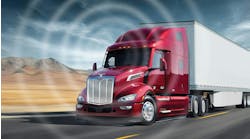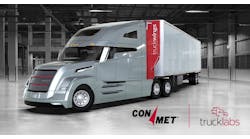Operators of corporate and for-hire transportation fleets understand the importance of maintenance and repair (M&R). It is crucial for keeping trucks running and on the road all year round, ensuring driver safety and timely delivery of goods to customers across the country.
Why a CMMS is important
Maintenance and repair practices today go beyond checking oil, brakes, and taillights. Heavy-duty trucks, like light vehicles, have become technologically advanced, and the maintenance required for each truck involves the proper diagnostic equipment and a current computerized maintenance management system (CMMS) for data analysis.
This is significant because more fleets are using in-house maintenance facilities and finding technicians is becoming harder. A recent industry survey found that 64% of respondents use in-house resources for their M&R, while 27% use a third-party vendor. Unfortunately, 91% said they still struggle to find technicians1.
It was positive to see that 95% said they are capturing more maintenance data on their vehicles, which is critical as M&R costs fluctuate. Fleet managers need to provide senior management with details on component cost changes and provide alternate options and recommendations. Fleets must be able to analyze all critical M&R parts and component costs, such as tires, brakes, service and repair, etc., as they manage their total cost of ownership (TCO).
The survey respondents cited multiple providers such as Fleet Net, Cetaris, TMT Fleet Maintenance, Degama, and others, but the majority stated they use an in-house/custom solution. Today’s leading fleets view M&R as a strategic element in their fleet management plans. They see greater value in leveraging asset management partners who can incorporate various M&R and diagnostic platforms with advanced software data analytics as part of a broader fleet services and TCO initiative.
Best practices and what you need to know
It is crucial to have an updated CMMS to achieve the lowest total cost of ownership for your fleet. The following list includes key questions and best practices to help you choose the right CMMS that will help you and your strategic asset management partner make data-driven M&R decisions for your fleet:
- Does your current CMMS allow you to create, track, edit, and automatically communicate work orders?
- Can you create web forms for vendors, technicians, or engineers to submit work orders for approval?
- Can you efficiently manage preventive maintenance in a calendar format?
- Can you create digital checklists for consistency, efficiency, and control of your assets and maintenance?
- Will the system alert you and your staff when you run out of what you need? Does it make reordering material easy for parts inventory?
- Will the system let you generate one-click reports and charts? Does it allow you to see the information the way you need it?
- Will the system alert you when vendor insurance and warranty expiration are closing in?
- Does the provider offer implementation training and continued support?
- Will the system integrate with your current OBC provider? Will the system do electronic DVIR and load them into the maintenance system?
Other critical items to consider include comparing different CMMS providers to see which ones have what you want versus what you need for functionality. It is also essential to understand each provider’s qualifications, their understanding of what maintenance managers need, and their history and track record in the industry.
With these tips in mind, fleet executives can ensure they have the right CMMS in place that can help them and their asset management partners achieve the lowest possible TCO for their bottom line. Also, with the ongoing supply chain issues, it has never been more important to pay close attention to M&R expenditures and metrics, with strategies to keep existing trucks on the road and on time. Asset management partners can help fleets take a closer look at each truck’s P&L to understand what has impacted costs down to the line-item VMRS code level and set a strategy for asset procurement, which is critical when all your baselines for the previous 10+ years are no longer relevant.



